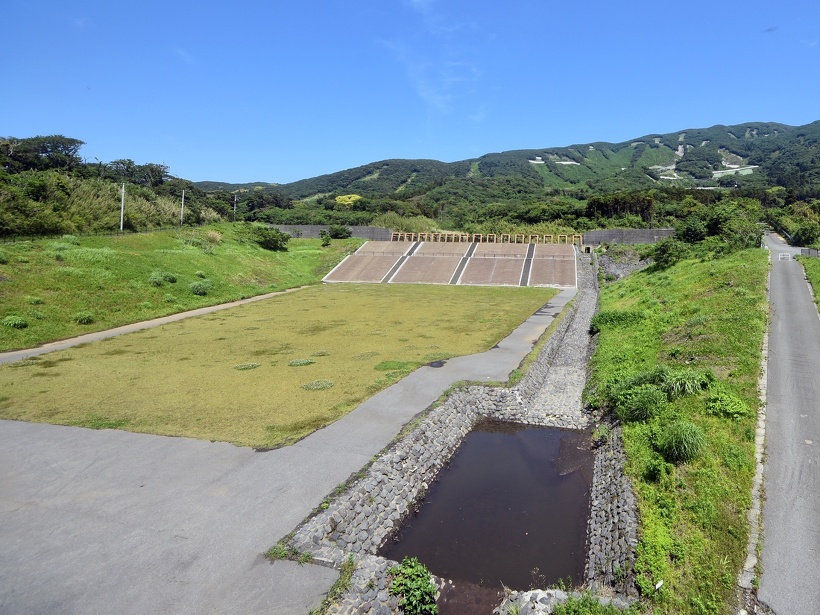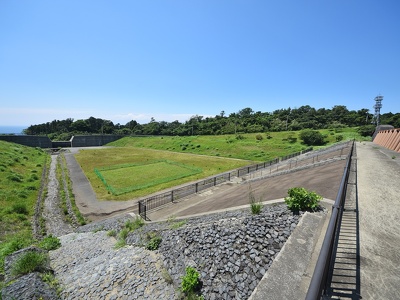Okanasawa Sand Pocket Function
| Area | Motomachi |
|---|
Following the 1986 eruption, the Tokyo Metropolitan Government has been constructing sedimentation works and embankments for lava flows and volcanic mudflows. Especially in Okanasawa, the largest village on the island, Motomachi, is located under the basin, and there is an elementary school in the expected area of mudslide flooding.
However, on October 16, 2013, heavy typhoon rains caused the slope to collapse, and a large amount of sediment with driftwood flowed out of several streams, including Okanasawa. 39 people died or were missing, and 153 houses were damaged in the Motomachi area. The slit dam upstream of the Okanasawa sedimentation works trapped a large amount of driftwood and debris, and the concrete weir downstream dammed up small stones and sediment, confirming that the erosion control facilities were effective in mitigating the damage.
In response to this disaster, the plan has been revised and further improvements are being made, including weir raising for the sedimentation works, hillside works to prevent the topsoil of the slope from collapsing, and flow conduits to guide the mudslides to the sedimentation works and channel them to the sea.



